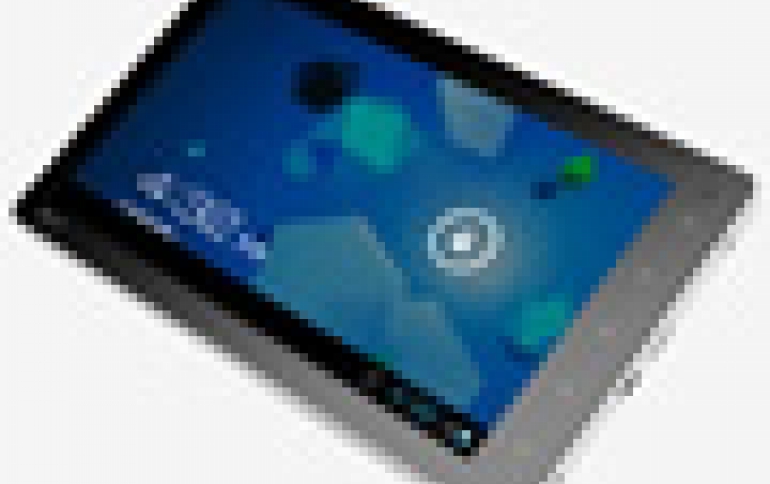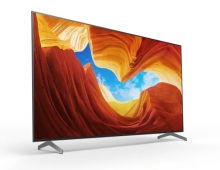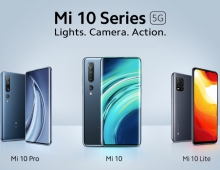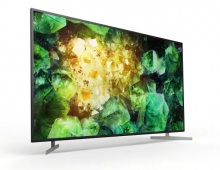
IHS Updates Forecasts for Tablets, UDTVs And Wearables
IHS on Sunday issued updated forecasts and insights on developments expected at the 2014 Consumer Electronics Show. The news flash covers the markets for tablets, ultra-high-definition televisions, wearable electronic devices, automotive operating systems and self-driving cars.
IHS's latest forecast for tablets - including both media tablets and PC-type tablets - predicts global shipments will soar to 488 million in 2017, up from 141 million in 2012. Shipments this year will surge by 72 percent to reach 243 million units.
"Shipments of tablets in 2013 and the coming years primarily are being boosted by the massive influx of low-cost white box devices from Asia," noted Rhoda Alexander, director of tablet research at IHS. "Market volumes in 2014 and beyond also will be driven by rising shipments of PC-type tablets, which will be prominently displayed at CES this year. This will be a make-or-break year for Windows-based PC tablets. Because of that, PC manufacturers will be putting their best foot forward at CES, showing off their most compelling products for the year."
In light of swift reductions in pricing, IHS has boosted its forecast for UHD liquid-crystal display (LCD) television sets. IHS now predicts 38.5 million UHD LCD TV sets will ship in 2018, up from 1.5 million in 2013, according to the TV Systems Intelligence Service at IHS. Shipments will fly up more than 500 percent to reach 10 million in 2014.
"While television brands will show off their massive new ultra-high-definition sets at CES, the real focus for UHD makers in 2014 will be cost reduction," said Jusy Hong, senior analyst for consumer electronics & technology at IHS. "Lower pricing will enable the market to expand?but UHD sets still have a long way to go before they command a major share of the overall market. In 2018, UHD will account for only about 16 percent of all LCD TV shipments."
Global market shipments of wearable devices for infotainment applications will rise by 155 percent from 2013 to 2018, according to IHS. Shipments will grow to 130.7 million units, up from 51.2 million in 2013. The infotainment segment consists of products including Bluetooth headsets, head-up displays, imaging products, smart glasses and smart watches.
"The wearable electronic device market comprises five disparate segments: military, industrial, infotainment, fitness and wellness, and healthcare and medical," said Shane Walker, senior manager for consumer and digital health research at IHS. "The market is dominated at present by the healthcare and fitness segments. However, during the next five years, infotainment is expected to experience the largest growth in unit shipments of all areas as consumers flock to buy new types of products, such as smart glasses and smart watches. Because of this strong growth potential, these devices are expected to be highlighted by numerous vendors at this year's CES."
Automakers and their suppliers will be also out in force at CES. This will drive a market for automotive infotainment operating systems whose size will rival that of the PC operating system business, according to IHS Automotive, driven by Polk.
"The market for automotive infotainment operating systems represents a major opportunity for software vendors, with platform sales climbing to nearly 130 million units in 2020 - about the size of the global PC market in 1999," said Egil Juliussen, research director for IHS Automotive. "Growth is being driven by the multiplicity of platforms in many cars, with a single auto potentially having one OS for the head unit and navigation, another for the telematics system and hands-free interface for mobile phones, and yet another for the rear-seat entertainment system."
"While self-driving cars are still many years off into the future, autonomous vehicles will be a major topic of discussion at CES," Juliussen added. "A CES session will be dedicated to autonomous driving, and several major car makers and suppliers will discuss their plans at the event."
IHS expects the first self-driving cars to hit the road in 2024. Global sales are expected to rise to 226,000 in 2025, to 4.2 million in 2030 and to 11.8 million in 2035.
"Shipments of tablets in 2013 and the coming years primarily are being boosted by the massive influx of low-cost white box devices from Asia," noted Rhoda Alexander, director of tablet research at IHS. "Market volumes in 2014 and beyond also will be driven by rising shipments of PC-type tablets, which will be prominently displayed at CES this year. This will be a make-or-break year for Windows-based PC tablets. Because of that, PC manufacturers will be putting their best foot forward at CES, showing off their most compelling products for the year."
In light of swift reductions in pricing, IHS has boosted its forecast for UHD liquid-crystal display (LCD) television sets. IHS now predicts 38.5 million UHD LCD TV sets will ship in 2018, up from 1.5 million in 2013, according to the TV Systems Intelligence Service at IHS. Shipments will fly up more than 500 percent to reach 10 million in 2014.
"While television brands will show off their massive new ultra-high-definition sets at CES, the real focus for UHD makers in 2014 will be cost reduction," said Jusy Hong, senior analyst for consumer electronics & technology at IHS. "Lower pricing will enable the market to expand?but UHD sets still have a long way to go before they command a major share of the overall market. In 2018, UHD will account for only about 16 percent of all LCD TV shipments."
Global market shipments of wearable devices for infotainment applications will rise by 155 percent from 2013 to 2018, according to IHS. Shipments will grow to 130.7 million units, up from 51.2 million in 2013. The infotainment segment consists of products including Bluetooth headsets, head-up displays, imaging products, smart glasses and smart watches.
"The wearable electronic device market comprises five disparate segments: military, industrial, infotainment, fitness and wellness, and healthcare and medical," said Shane Walker, senior manager for consumer and digital health research at IHS. "The market is dominated at present by the healthcare and fitness segments. However, during the next five years, infotainment is expected to experience the largest growth in unit shipments of all areas as consumers flock to buy new types of products, such as smart glasses and smart watches. Because of this strong growth potential, these devices are expected to be highlighted by numerous vendors at this year's CES."
Automakers and their suppliers will be also out in force at CES. This will drive a market for automotive infotainment operating systems whose size will rival that of the PC operating system business, according to IHS Automotive, driven by Polk.
"The market for automotive infotainment operating systems represents a major opportunity for software vendors, with platform sales climbing to nearly 130 million units in 2020 - about the size of the global PC market in 1999," said Egil Juliussen, research director for IHS Automotive. "Growth is being driven by the multiplicity of platforms in many cars, with a single auto potentially having one OS for the head unit and navigation, another for the telematics system and hands-free interface for mobile phones, and yet another for the rear-seat entertainment system."
"While self-driving cars are still many years off into the future, autonomous vehicles will be a major topic of discussion at CES," Juliussen added. "A CES session will be dedicated to autonomous driving, and several major car makers and suppliers will discuss their plans at the event."
IHS expects the first self-driving cars to hit the road in 2024. Global sales are expected to rise to 226,000 in 2025, to 4.2 million in 2030 and to 11.8 million in 2035.





















